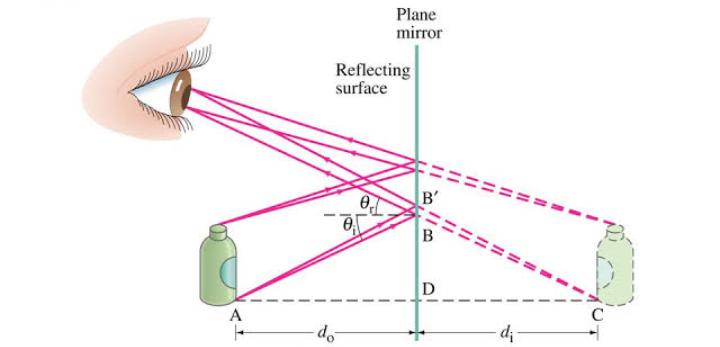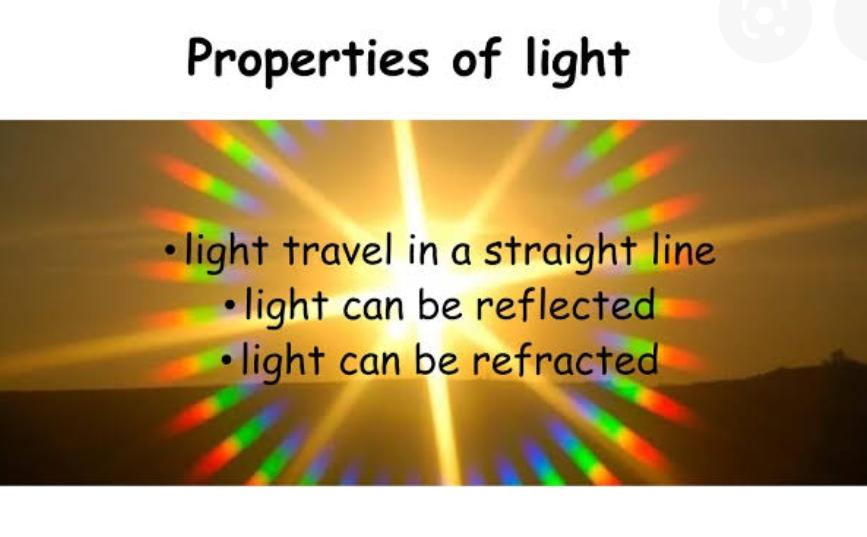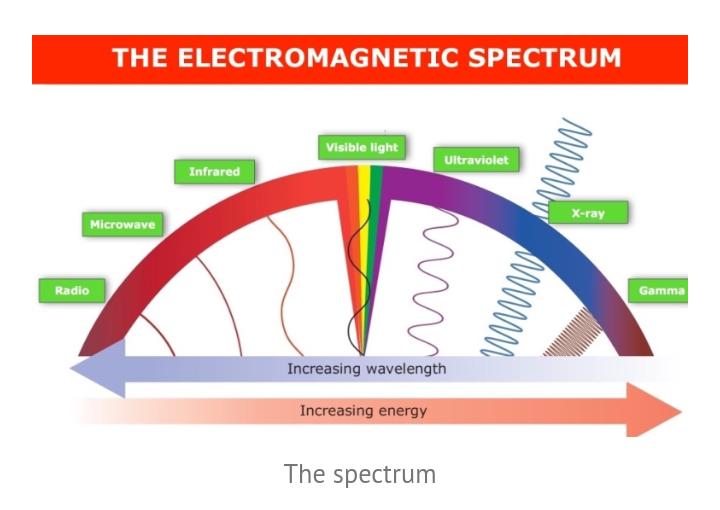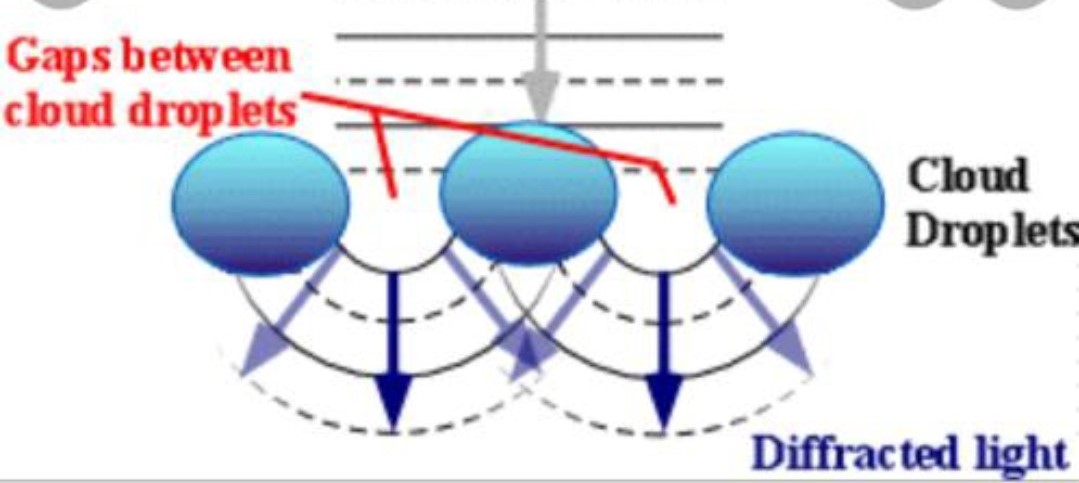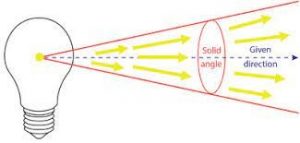Geometric optics regulates the propagation of light by ray and is valid only if the wavelength of light is much less than the size of the barrier.
The behavior of light rays is determined by ray optics. A ray of light is the path of a straight line after which light travels from one point to another. A group (or bundle) of adjacent divergent or light convergent rays is called a light pencil. A bundle of light so that the rays are arranged in parallel is called a ray of light.
Reflection of light : Reflection of light is a phenomenon of change in the path of light rays without any change in the medium. This reflected light, when received by our eyes, enables us to see things. We can see through a transparent medium because light is transmitted through it.
Laws of reflection :
1.The incident ray, the reflected ray and the normal at the point of incident ray all lie in the same plane.
2. The angle of incidence (i) = the angle of reflection (r).
3. The light paths are reversible and sometimes.
Mirror – Mirrors can be plane or spherical.
Plane mirror – plane mirror is a plane sheet of glass whose one side is silvered and other side is polished. Plane mirror is also called looking mirror.
Surface mirror : The reflective surface of a spherical mirror may be curved inwards or outwards. A spherical mirror is a part of a hollow sphere whose one side is silvered and the other side is polished. The two types of spherical mirrors are as follows :
Concave mirror : concave mirror is a spherical mirror whose reflecting surface is curved inwards .
Convex mirror : convex mirror is a spherical mirror whose reflecting surface is curved outwards.
Image made by plane mirror
Features are –
* It is the same size as the object.
*It is located at the same distance behind the mirror because the object is in front.
*It is reversed later.
*It is virtual in nature.
Refraction : Refraction is the turning of a wave when it enters a medium where its speed is different. The refraction of light when it goes from a fast medium to a slow medium bends the light beam towards the boundary of the two media towards normal.
Laws of refraction :
- The incident and refracted rays are on opposite sides of the normal and all the three are in the same plane.
- Snell’s law is defined as “The ratio of the sine of the angle of incidence to the sine of the angle of refraction is a constant, for the light of a given colour and for the given pair of media”.
Refraction through spherical lenses :
There are two spherical lenses.. Convex lens and concave lens.
Convex lens – Convex lenses are optical imaging components with positive focus length. A plus lens converges light to a focal point, creating a ‘real’ image.
convex lens is three types:
Biconvex, plano – convex, concavo-convex.
Convex lense –
Magnification of the image.
The object appears to move both in the meridian and in the opposite direction.
The image can’t be distorted.
Convex spherical is use for
Hypermetropia
Aphakia
Presbyopia
As a low visual aid
Direct ophthalmoscope
Indirect ophthalmoscope
Microscope
Synaptophore
Corneal loupe or telescopic loupe
Different condensing lenses for laser therapy.
Malingering test with high plus lens. Lens.
Concave Lense –
A concave lens diverges light and has a virtual focal point on the same side of the lens from which the light comes.
concave lens are three types: Biconcave, plano – concave, concavo – concave.
Concave lense –
Minification of the image.
Object appears to move in both meridians and in the same direction.
The image can’t be distorted.
Concave spherical is use for
Direct ophthalmoscope
Hruby lens
Telescopic loupe
Fundus contact lens
Central lens of Gonioscope
Malingering test with high minus lens.

